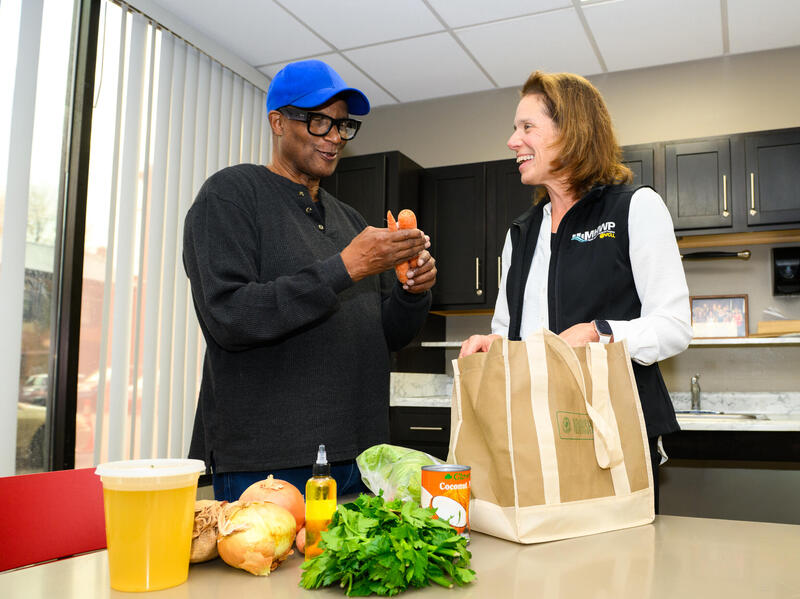
Feb. 10, 2025
Researchers identified 44 locations in Virginia where adding pharmacy services could benefit more than 10,000 residents
Share this story
The addition of pharmacy services at 44 locations throughout Virginia could reduce the impact of pharmacy deserts for thousands of Virginians in each area, according to a study published today in the Journal of the American Pharmacists Association by researchers from Virginia Commonwealth University and the Virginia Board of Pharmacy.
Similar to food deserts, where residents have limited access to healthy and affordable food, pharmacy deserts leave residents with limited access to the medications, education and primary care services that pharmacists can provide. And the number of pharmacy deserts is growing.
In Virginia, data from the Board of Pharmacy revealed that the number of pharmacies decreased by about 6% between June 2016 and May 2024, mirroring a recent national analysis that identified a 5.4% decrease in pharmacy rates from 2018 to 2021. Pharmacy closures have unseen ripple effects for public health among residents in those areas, according to the paper’s corresponding author Teresa M. Salgado, Ph.D., director of the Center for Pharmacy Practice Innovation at the VCU School of Pharmacy.
“It’s not just the ability to provide life-saving medications that goes away,” Salgado said. “First of all, there’s the loss of access to a pharmacist, to a health professional who provides care in areas where there may be limited access to other health care providers. Frankly, community-based pharmacies are the front door to health care and the hub and vitality of these communities.”
In addition to providing life-saving medications and medication counseling, pharmacists provide other health and wellness services, including vaccinations, tobacco cessation, point-of-care tests and treatment of urinary tract infections, influenza, strep throat and COVID-19, evaluation and dispensing of oral contraceptives, naloxone, epinephrine and pre- and post-exposure prophylaxis (PrEP and PEP) for HIV prevention, Salgado added.
“All of these services have been approved as statewide protocols by the Virginia Board of Pharmacy and the legislature. These vital services – the essential public health role of the pharmacist – go away when a pharmacy disappears in the community,” she said.
In the study, “Characterizing Pharmacy Deserts and Designing a Model to Minimize Inequities in Pharmacy Distribution in Virginia,” researchers identified 51 census tracts in Virginia that qualified as pharmacy deserts – census tracts that had low access to pharmacies and were home to mostly low-income residents. Compared with non-deserts, pharmacy desert tracts had a significantly lower percentage of residents under 18 years old, a greater percentage of Black residents, a greater percentage of residents who were uninsured or on Medicaid or Medicare, a greater percentage of residents living in poverty and a lower median household income. These findings, Salgado said, are in line with national data.
“Sometimes we take things like getting a flu shot at the pharmacy for granted, and it’s not until they go away that we realize, ‘Wow, we no longer have access.’ And usually it’s the same at-risk populations who have the hardest time accessing health care and who will suffer the consequences of pharmacies closing,” Salgado said.
Of the 2,198 census tracts in Virginia, urban census tracts were more frequently pharmacy deserts (5.5% of tracts) than rural (2.9%) and suburban (0.1%), researchers found. Specifically, seven tracts in Norfolk, five tracts in Richmond, four tracts in Halifax County (home to South Boston), and three tracts in both Newport News and Chesapeake were considered pharmacy deserts.
“Halifax County and Hampton Roads are areas where we could place additional pharmacies and see a big impact,” Salgado said.
The researchers performed a geospatial analysis, running 10,000 simulation iterations, and identified 44 primarily urban locations where adding pharmacy services could significantly improve access and decrease pharmacy deserts. Each of the 44 locations was identified for its ability to prevent pharmacy desert status for at least 10,000 residents. In some cases where simulated locations were close together, multiple locations identified could benefit the same resident; in other cases, a single location could serve well over 10,000 residents. For example, adding one location for pharmacy services in Chesapeake prevented over 15,000 residents and four census tracts from pharmacy desert status in several of the iterations.
“More so than identifying pharmacy deserts in the commonwealth, this simulation used objective criteria to identify priority areas where providing access to a pharmacy would benefit the greatest number of residents. This study produced concrete and actionable recommendations to guide future decisions and next steps in addressing the pharmacy deserts issue,” Salgado said. “This is what sets this study apart from other studies of pharmacy deserts at the national and state levels.”
Not all solutions might look like a new pharmacy, said Salgado, who also serves as an associate professor in VCU’s Department of Pharmacotherapy and Outcomes Science.
“Is a brick-and-mortar pharmacy needed, or could a mobile unit, for example, be deployed to those areas to address health care needs? We would have to go and talk to the communities and understand what would be viable from a financial standpoint and what would better address the population's needs,” Salgado said.
The team of researchers who contributed to this study includes first author Joseph Boyle, Ph.D., a postdoctoral fellow at VCU Massey Comprehensive Cancer Center who earned a Ph.D. in biostatistics from the VCU School of Medicine in 2023, and co-authors Rachel Wittenauer, Ph.D., of the University of Washington; Shreya Ramella, an MPH candidate at New York University who earned a B.S. in bioinformatics from VCU in 2023; and Caroline Juran, executive director of the Virginia Board of Pharmacy, along with Salgado’s VCU School of Pharmacy colleagues at the Center for Pharmacy Practice and Innovation and in the Department of Pharmacotherapy and Outcomes Science: John D. Bucheit, Pharm.D., associate professor; Evan M. Sisson, Pharm.D., professor; Jean-Venable “Kelly” Goode, Pharm.D., professor; and Sharon S. Gatewood, Pharm.D., associate professor.
Subscribe to VCU News
Subscribe to VCU News at newsletter.vcu.edu and receive a selection of stories, videos, photos, news clips and event listings in your inbox.










